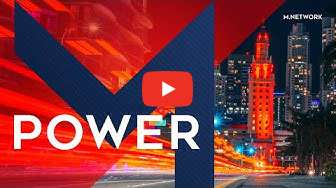As a designer working with non-profits, I often encounter confusion about what it means to make a document ADA compliant. Many assume it’s just about adjusting colors or removing visual elements, but true accessibility is about much more than visual tweaks.
In marketing when we talk about accessibility, we’re talking about how content is experienced, not just how it looks. A pretty design can still be completely inaccessible if a screen reader can’t navigate it, if images lack alternative text, or if the document structure doesn’t follow logical content hierarchy. This is where my role as a designer at The M Network becomes crucial.
Many new clients assume that ADA compliance means I’ll have to turn their marketing materials into something bland and purely functional. But from a designer’s perspective, the goal is to preserve the aesthetic appeal while making the document fully accessible. Good accessibility is not about altering your branding, it’s about integrating these “invisible” features into the design.
When I design with ADA in mind, I follow a systematic approach:
Establish a Clear Structure
I use Paragraph and Character Styles to organize headers, subheads, and body copy.
Implement Alternative Text Descriptions
Each image, logo, button, and non-text element gets a description that describes the element or its purpose.
Test Navigation, Response and User Feedback
I ensure that the navigability of the document is logical and confirm the document’s responsiveness on various devices and screens.

Following this approach, there are some specific ways I structure documents so that assistive devices can interpret them. These are details that make a document navigable, readable, and understandable for all audiences.
For example:
Use Alternative Text for Images and Buttons
Descriptive text allows users with visual impairments to understand what each element represents.
Set Character and Paragraph Styles
These set a clear content hierarchy, ensuring smooth navigation for those using assistive tools to distinguish text headlines from body copy and hyperlinks.
Create and Tag Artifacts
This process isn’t just about labeling content—it’s about helping assistive software understand the document’s structure by defining logos, decorative shapes, and elements that are not part of the copy.
For non-profits, accessibility is more than just a checkbox. It’s a commitment to inclusivity and the communities they serve. Ensuring all audiences can access information, regardless of ability strengthens an organization’s mission and reach.
As a designer, it’s my job to ensure that your brand stands out and connects with your audience, whether that’s through creative visuals or the “invisible” features that make your content fully accessible. Effective design isn’t just about looking good, it’s about ensuring your message reaches everyone you want to connect with by enhancing it to include everyone.
Ready to make your content more accessible or curious about how ADA compliance fits into your design strategy?
Let’s talk!




